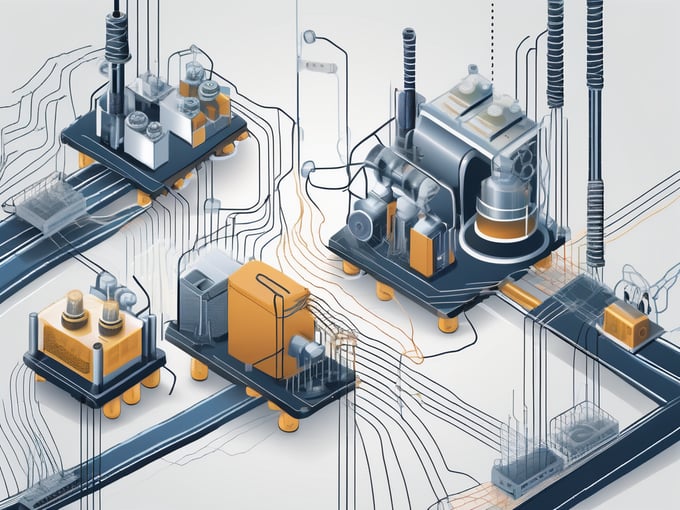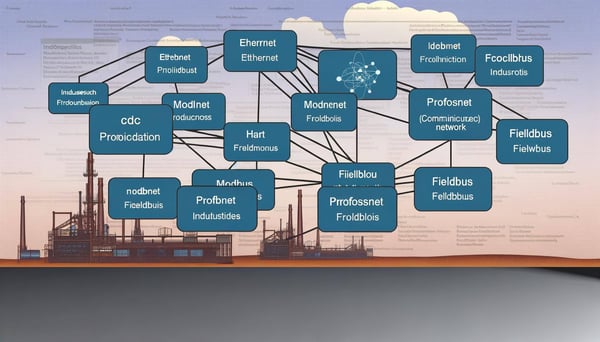
Fundamentals of Sinec H1
In the realm of industrial automation, communication protocols play a pivotal role in ensuring seamless interaction between different devices and systems. One such protocol that has been instrumental in shaping the landscape of industrial communication is Sinec H1. This article delves into the fundamentals of Sinec H1, exploring its origins, functionality, and why it has become a cornerstone in the world of industrial protocols.
Origins of Sinec H1
The Sinec H1 protocol was developed by Siemens, a global powerhouse in the field of industrial automation. The protocol was designed to cater to the specific needs of communication in automated systems, particularly in the manufacturing sector. The primary objective was to facilitate robust and reliable data exchange between different components of an automated system, such as programmable logic controllers (PLCs), human-machine interfaces (HMIs), and other networked devices.
Over the years, Sinec H1 has evolved, incorporating advancements in technology and adapting to the changing demands of the industrial sector. Today, it stands as a testament to Siemens' commitment to innovation and their understanding of the intricacies of industrial communication.
Understanding the Functionality of Sinec H1
Sinec H1 operates on the basis of a master-slave architecture. In this setup, the master device initiates communication with the slave devices, which respond to the requests made by the master. This architecture ensures a controlled flow of data, minimizing the chances of data collision and ensuring efficient use of network resources.
The protocol uses a token-passing mechanism for data exchange. In this system, a token is passed from one device to another in a predetermined sequence. The device holding the token has the authority to transmit data, ensuring that only one device transmits data at a time. This mechanism further enhances the efficiency and reliability of data communication.
Role of Sinec H1 in Industrial Automation
Sinec H1 has been pivotal in facilitating communication in industrial automation systems. Its robust architecture and efficient data exchange mechanism make it ideal for applications where reliability and efficiency are paramount. From controlling production processes to monitoring system performance, Sinec H1 has proven its worth in a myriad of applications.
Moreover, the protocol's ability to support a wide range of devices and systems adds to its versatility. Whether it's PLCs, HMIs, or other networked devices, Sinec H1 can facilitate communication between them, making it a go-to choice for many industrial automation setups.
Integration with Other Systems
Another key aspect of Sinec H1's functionality is its ability to integrate with other systems. The protocol can be used in conjunction with other communication protocols, providing a seamless interface for data exchange. This interoperability is crucial in today's industrial setups, where a variety of devices and systems need to interact with each other.
Furthermore, Sinec H1 supports a variety of data types, making it suitable for a wide range of applications. Whether it's binary data for control signals or analog data for process variables, Sinec H1 can handle it all, further enhancing its applicability in industrial automation.
The Future of Sinec H1
As the industrial sector continues to evolve, so does the need for efficient and reliable communication protocols. Sinec H1, with its robust architecture and versatile functionality, is well-positioned to meet these demands. The protocol's ability to adapt to technological advancements and changing industry needs makes it a future-proof solution for industrial communication.

Moreover, Siemens' commitment to continuous innovation and improvement ensures that Sinec H1 will continue to evolve, incorporating new features and capabilities to meet the future needs of the industrial sector. From supporting new data types to integrating with emerging technologies, Sinec H1 is poised to continue its legacy as a leading industrial protocol.
Conclusion
In conclusion, Sinec H1 is a powerful and versatile industrial protocol that has played a crucial role in shaping the landscape of industrial communication. Its robust architecture, efficient data exchange mechanism, and ability to integrate with other systems make it a reliable and efficient solution for industrial automation.

As the industrial sector continues to evolve, Sinec H1 is poised to meet the changing demands, thanks to its adaptability and Siemens' commitment to innovation. Whether you're looking to optimize your current industrial setup or planning to implement a new one, Sinec H1 is a protocol worth considering.



